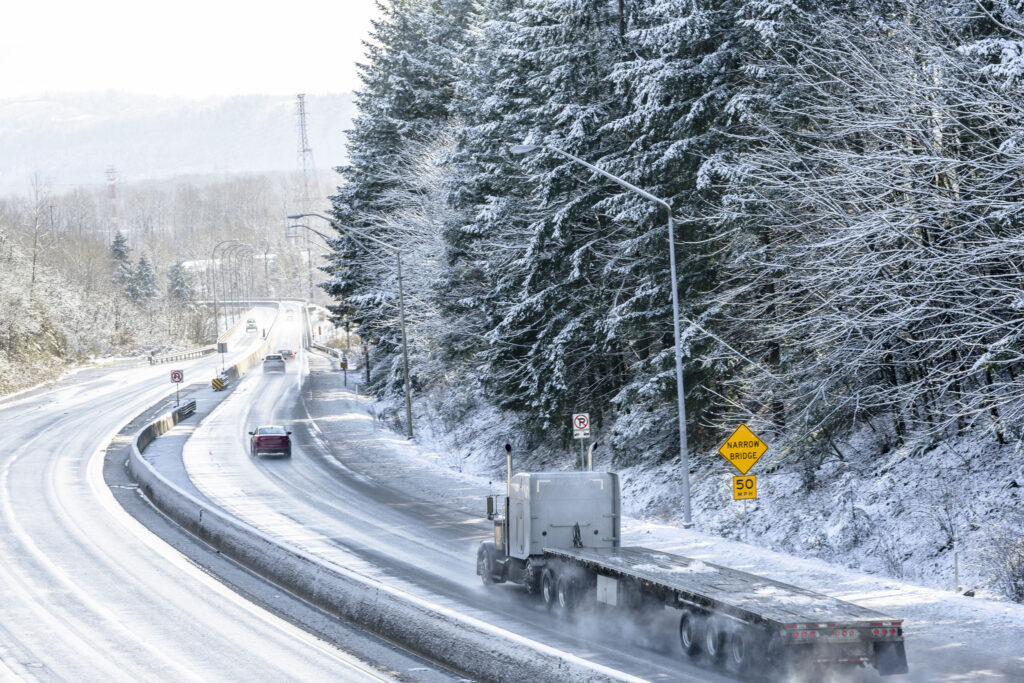
If you live in northern Washington, chances are you’re used to snow. But despite the record amount of snowfall the state receives each fall and winter, many drivers still engage in unsafe driving practices, leading to an increase in Washington car accidents.
In this blog, Lerner and Rowe Injury Attorneys explains why so many car accidents happen in wintry conditions and provides crucial safety tips for driving in the snow in Washington.
What Causes Winter Car Accidents in Washington?
Even under the best driving conditions, accidents are a fact of life. Between human error and risky behavior like drunk driving, distracted driving, and road rage, most people will be involved in at least one car accident in their lifetime, either as a driver or a passenger.
When you throw in inclement weather—especially snow and everything that comes with it—you get even higher numbers of accidents. Many of the bad driving habits people engage in and normally get away with during optimal weather can mean the difference between a near-miss and a catastrophic injury during winter.
In November 2019, over 60 cars in Spokane (an area well-known for plentiful snowfall) were involved in a massive pileup on Interstate 90 due to high amounts of ice and snow. Six people were injured and the entire interstate had to be shut down.
The good news? Many winter car accidents can be avoided by preparing your vehicle for winter weather, cultivating safe driving habits, and anticipating potentially dangerous situations. Check out these tips for driving in the snow in Washington.
Tip #1: Winterize Your Car Early
If you haven’t already, now is the time to get your vehicle serviced, tuned up, and ready for the snowy months to come. Even Seattle drivers who may not experience as much snow as other parts of Washington should take time to make sure their car is ready for colder weather.
You can use the following checklist as a general guide to winterizing your car.
- Check your tire pressure. Your tires may lose as much as one pound per square inch (PSI) of air for every 10 degrees the temperature drops. Proper tire inflation is crucial to safe driving, so make sure your tires are optimally inflated and switch to winter tires if you spend the majority of your time driving in the snow in Washington.
- Switch to winter windshield wipers. Winter wiper blades are both bigger and sturdier, which means they are more effective and less likely to fail when you need them the most. Be sure to keep your washer fluid full as well!
- Make sure your heater and defroster are working properly. Being able to see what’s going on behind you is as important as being able to see through your front windshield. If your heater or defroster aren’t working as well as they should, have your car diagnosed and repaired by a certified technician.
Note: Using this checklist provides a guideline for most vehicles, but keep in mind that your maintenance needs may vary significantly depending on the age, condition, and type of car you drive. Consult your owner’s manual first and follow all manufacturer recommendations and warnings. It is also good practice to regularly check for vehicle recalls to avoid injury by a defective product.
Tip #2: Prepare for the Unexpected
You should always have an emergency kit in any vehicle you drive regularly, especially if you are headed on a roadtrip over the holidays. Be sure to create or update your winter driving kit as the seasons change. Here are some essentials you should include:
- First aid kit
- Flashlight with extra batteries
- Nonperishable food items
- Water
- Sturdy shoes
- Blankets
- Extra phone charger
- Kitty litter (for if you get stuck)
- Snow chains
- Ice scraper
- Road flares
Tip #3: Know Your Snow
Not all snowfall is created equal. It’s important to be able to understand how you should adjust your driving depending on what winter conditions are present on the roadway. Here are some rules of thumb for driving in the snow in Washington:
- Don’t underestimate light snowfall. It’s all too easy to become overconfident once you’ve driven through big snowstorms. Even a light dusting of snow can prove to be disastrous if the snow melts and refreezes on the asphalt, leading to hard-to-spot black ice. Decrease your speed and increase your following distance even during flurries.
- If you do hit a patch of ice, remember two key things—don’t panic, and don’t slam on the brakes. Try to keep your vehicle going straight by turning your steering wheel into the spin to avoid a potential rollover accident.
- Beware of blowing snow. Snowfall and strong winds can create a hazardous driving condition called blowing snow, in which already-fallen snow is picked back up by the wind. This can lead to significantly reduced visibility. In these conditions, you’ll want to slow down gradually, increase your following distance, and turn on your low-beam headlights and fog lights if you have them.
What to Do If You Are Injured While Driving in the Snow
Sometimes even the most prepared drivers are injured in car accidents because of another driver’s carelessness. Pedestrians, too, are at a higher risk of accidents involving other cars in the winter, especially if you get out of your car to put on snow chains.
If you have been injured due to another person’s negligence this winter, it’s important to know that you may be entitled to compensation for your injuries. There’s no need to accept a lowball settlement offer from an insurance company—at least not when you have a Seattle personal injury lawyer on your side.
To claim your free, no obligation consultation with Lerner and Rowe Injury Attorneys, give us a call at 844-977-1900. You can also reach us online by filling out this convenient form, or by connecting with one of our LiveChat agents standing by.